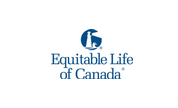





























The chance of becoming disabled for 90 days or longer, at least once before age 65, is approximately 1 in 3. Most people cannot afford to do without their income, particularly for an extended period of time. Disability insurance policies provide a monthly income to the insured during a period of disability.
The main features of a disability policy are described below. Some of the benefits described are not available in certain policies.
This is the most important feature of the policy as it is the basis for determining when the insured is eligible to make a claim. There are three common definitions in use:
Two of the definitions are sometimes combined into one contract. For example, the own "occupation definition" could apply for the first two years of disability with the "any occupation" definition applying thereafter.
A sickness or injury may not be severe enough to keep the insured totally disabled, but may nevertheless result in a loss of earnings. This benefit pays a proportionate benefit if the loss of earnings resulting from a disability are within a specific range, typically between 20% and 80%.
If the insured is considered partially disabled, in other words, is unable to perform one or more of the important duties of his or her occupation or, can perform all the important duties, but not on a full-time basis, a percentage of the maximum benefit is payable.
This is the period from the onset of disability and the commencement of disability benefit payments. The elimination period can range from 30 days to 2 years. A shorter elimination period results in a higher premium.
This is the maximum amount of time that disability benefits are payable when the insured becomes disabled. The benefit period can range from one year to age 65. The longer the benefit period, the higher the premium.
To reduce the impact of inflation, the disability benefit is increased (annually or semi-annually) by a fixed percentage or by the Consumer Price Index.
This benefit allows the person insured to purchase additional coverage at stated times in the future, without providing evidence of insurability. However, future purchases are generally subject to financial underwriting and maximum issue and participation limits.
Provides for payment of the total disability benefit from the first day of hospitalization as long as the insured satisfies the definition of total disability and has been hospitalized for a specified period of time.
This option provides a lump sum benefit for death and benefits for specific losses due to accidental bodily injuries sustained by the insured and resulting in a continuous total disability.
In the event that retirement contributions are interrupted by a period of total disability, this option is designed to help maintain retirement savings.